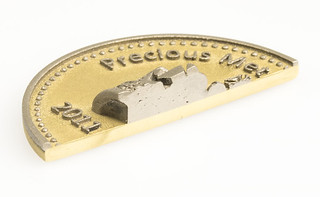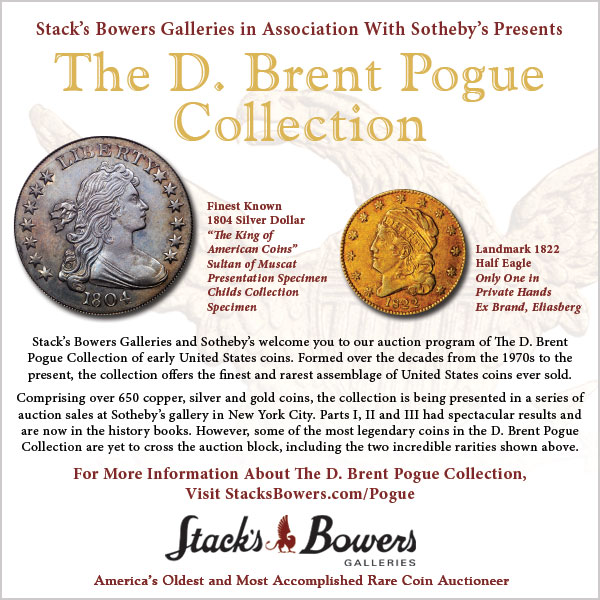
PREV ARTICLE
NEXT ARTICLE
FULL ISSUE
PREV FULL ISSUE
3D PRINTING IMPOSSIBLY HIGH RELIEF PRECIOUS METAL COINS
I wasn't at the recent World Money Fair in Berlin, but I learned from this article about an interesting technology demonstrated
there: 3D printing of precious metal coins. The additive manufacturing process constructs the coin layer by layer without the need for
striking from dies. By eliminating dies the coins can have impossibly high relief, and even have open areas and voids that would be
equally impossible to strike with dies. Welcome to the Future. -Editor
Cooksongold’s Direct Precious metal 3D printing has already been applied to create several unique pieces of jewelry, which were highlighted in the recent PRECIOUS Project, a £471,000 research and development project into the additive manufacture of precious metal jewelry. Cooksongold, part of the Heimerle + Meule Group, has a long history of manufacturing precious metal products for the jewelry and watchmaking industries. Last year in collaboration with EOS, the company launched the Precious M 080, an advanced manufacturing technology that allows users to create complex jewelery and watch components in a range of Advanced Precious Metal Powders; 18k gold, 950 Platinum and 925 silver. In its most recent project the technology was utilised to tackle a different kind of industrial manufacturing – at the mint. Cooksongold already supplies coin blanks to many mints around the world, which then strike their own images onto the coins. With that, the precious metals supplier decided to set itself the challenge of printing the world’s first truly 3D image directly onto the face of an existing blank coin using a different alloy. To achieve this, the build platform was first milled to house the existing 18k yellow gold coin blank. Using a CAD image of the “crown” design, the image was 3D printed in 20-micron layers using 500g of 18k white powder directly onto the coin. The precious metal 3D printing process melted the powder directly to the surface of the coin ensuring strong adhesion between the metals. Utilising the unique production process meant it was possible for the coin to have undercuts and display a truly 3D image that is simply not possible using traditional stamping techniques. 
The build time took just one hour to complete and then a further 30 minutes to post process. Due to the lack of support structures, the coin was removed with ease and post-processed using conventional automated and hand polishing techniques. The finished piece weighed 44.6g. By splitting the coin blank down the middle, the team were able to confirm that their first effort demonstrated “fantastic adhesion” between layers of the two alloys. Following the success of the first case study, Cooksongold decided to experiment with the possibility of printing on BOTH sides of a fine gold coin, only this time using platinum. Using a similar process, the build platform was milled to house the gold 28.1mm diameter, 2.00mm thick coin blank, plus the 5.3mm high relief of the “crown” image. Using a CAD file the crown image was 3D printed onto the back of the coin and then repeated on the reverse. With minimal finishing, the entire process took 140 minutes to complete. Along with the ability to combine two metals, the second innovation shown in these studies is the freedom to produce a 3D image with a much higher relief than conventional stamping processes allow. Whilst a standard coin features a shallow relief of around 1.00 or 2.00mm, Cooksongold were able to achieve a relief of 5.3mm with 3D printing. Cooksongold recently showcased the results of these prints to at the world’s largest coin fair, World Money Fair in Berlin. Members of the coin making industry were particularly excited by the potential to print hollow structures directly onto the surface of a blank therefore reducing weight and material consumption dramatically. To read the complete article, see:

Wayne Homren, Editor The Numismatic Bibliomania Society is a non-profit organization promoting numismatic literature. See our web site at coinbooks.org. To submit items for publication in The E-Sylum, write to the Editor at this address: whomren@gmail.com To subscribe go to: https://my.binhost.com/lists/listinfo/esylum All Rights Reserved. NBS Home Page Contact the NBS webmaster 
|
